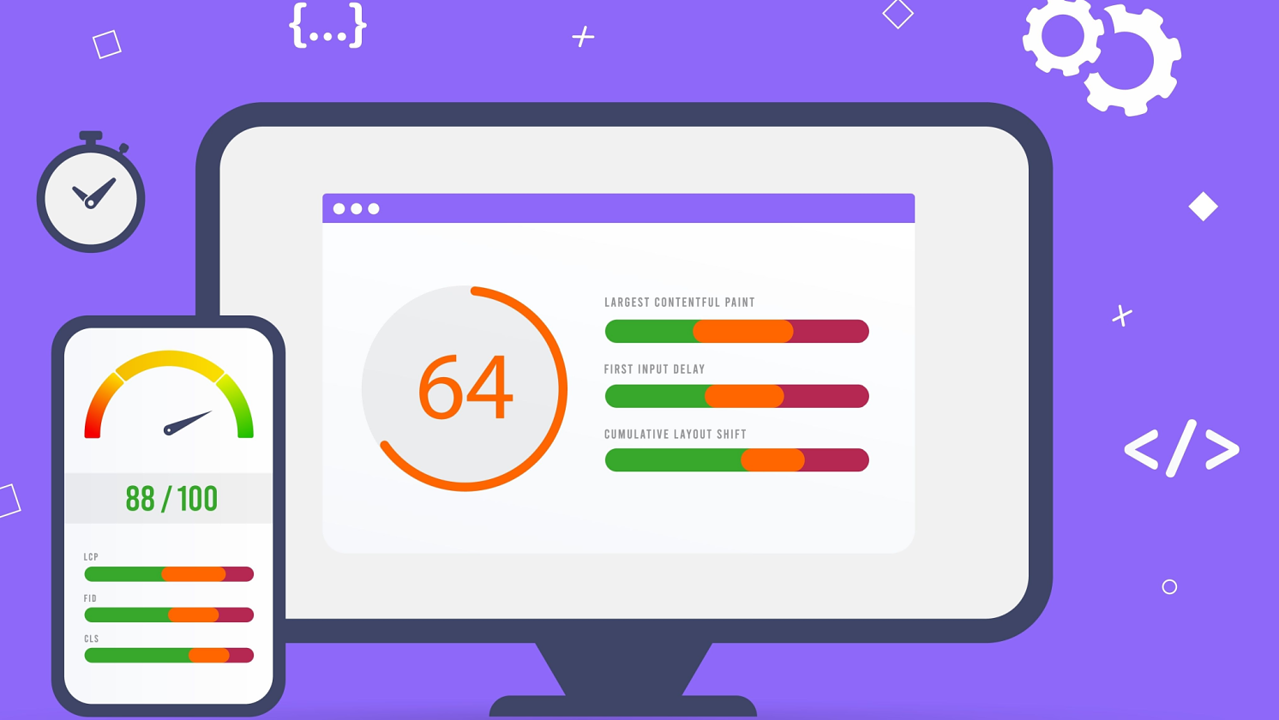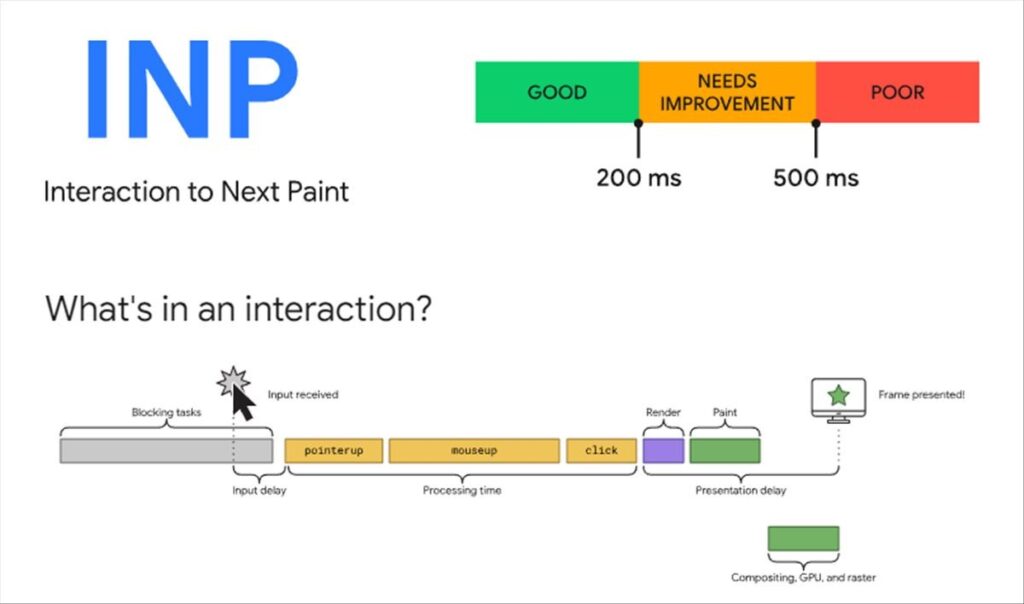
Google Search Console Adds INP To Core Web Vitals Report
What is INP in Core Web Vitals:
In this digital era, user experience has become a important factor in the success of any website or online platform. As web developers and site owners strive to create engaging and efficient experiences for their users, they often turn to performance metrics to measure and improve their website’s performance. In recent years, a significant shift has occurred with the introduction of Core Web Vitals as a standardized set of metrics, replacing the previous metric of Input Delay (INP). In this blog post, we will explore the journey from INP to Core Web Vitals, highlighting the importance of these metrics and discussing how to optimize them to enhance user experience.
Understanding Input Delay (INP):
Input Delay, formerly known as First Input Delay (FID), was an important metric that measured the responsiveness of a website. It focused on the delay between a user’s first interaction with a page, such as clicking a button or selecting a dropdown menu, and the browser’s response to that interaction. INP aimed to capture the time it took for the website to become interactive, ensuring a smooth and seamless user experience. However, INP had its limitations and didn’t provide a comprehensive overview of a website’s performance.

Introducing Core Web Vitals:
To address the limitations of INP Core Web Vitals and provide a more holistic approach to measuring user experience, Google introduced Core Web Vitals. Core Web Vitals is a set of three essential performance metrics that focus on different aspects of user experience: Largest Contentful Paint (LCP), First Input Delay (FID), and Cumulative Layout Shift (CLS). These metrics were chosen based on extensive research and analysis of real user interactions and aim to capture key aspects of a website’s loading speed, interactivity, and visual stability.
Largest Contentful Paint (LCP):
LCP measures the time it takes for the largest content element on a webpage to become visible to the user. It reflects the perceived loading speed of a page and is crucial in providing a good user experience. To optimize LCP, web developers should focus on improving server response times, optimizing resource loading (e.g., images, stylesheets), and implementing performance best practices such as lazy loading or content caching.
First Input Delay (FID):
While FID was the sole metric for measuring input delay in the past, it remains an essential component of Core Web Vitals. FID measures the delay between a user’s first interaction and the website’s response, determining its interactivity. To optimize FID, reducing JavaScript execution time and minimizing the main thread’s workload are crucial. Splitting long tasks, optimizing third-party scripts, and deferring non-critical JavaScript can significantly improve FID.
Cumulative Layout Shift (CLS):
CLS measures the visual stability of a webpage during its loading and interacting phase. It quantifies how much elements shift around unexpectedly, causing an unpleasant experience for users. To optimize CLS, web developers should ensure proper dimensions for images and other media elements, use explicit size attributes, and avoid inserting new elements above existing content dynamically.
Optimizing Core Web Vitals:
To optimize Core Web Vitals, it is essential to adopt a holistic approach to website performance. Here are some general tips to improve Core Web Vitals:
Prioritize performance in the development process:
Consider performance from the early stages of website development. Collaborate with designers and developers to ensure that performance is a top priority.
Monitor and analyze performance regularly:
Utilize tools like Google PageSpeed Insights, Lighthouse, or other web performance monitoring tools to identify areas that need improvement. Continuously monitor your website’s performance and make adjustments as needed.
Optimize server response times:
Minimize server response times by employing caching mechanisms, optimizing database queries, and leveraging content delivery networks (CDNs) to deliver content more efficiently.
Optimize resource loading:
Optimize images, stylesheets, and scripts to reduce their size and improve loading times. Compress and resize images appropriately and leverage browser caching to reduce the number of requests made to the server.
Utilize lazy loading:
Implement lazy loading techniques to load content as users scroll, reducing the initial page load time. Lazy loading can significantly improve LCP and overall page performance.
Reduce third-party scripts and requests:
Limit the number of third-party scripts and requests on your website. Each additional script introduces potential delays and increases the chances of conflicts or performance issues.
Conclusion:
The shift from INP to Core Web Vitals signifies an important transition in how web performance is measured and optimized. By focusing on LCP, FID, and CLS, web developers can gain a comprehensive understanding of their website’s performance and improve user experience accordingly. By implementing the optimization strategies mentioned above and staying up-to-date with the latest best practices, website owners can ensure their sites are delivering fast, interactive, and visually stable experiences, ultimately driving user engagement and satisfaction.







